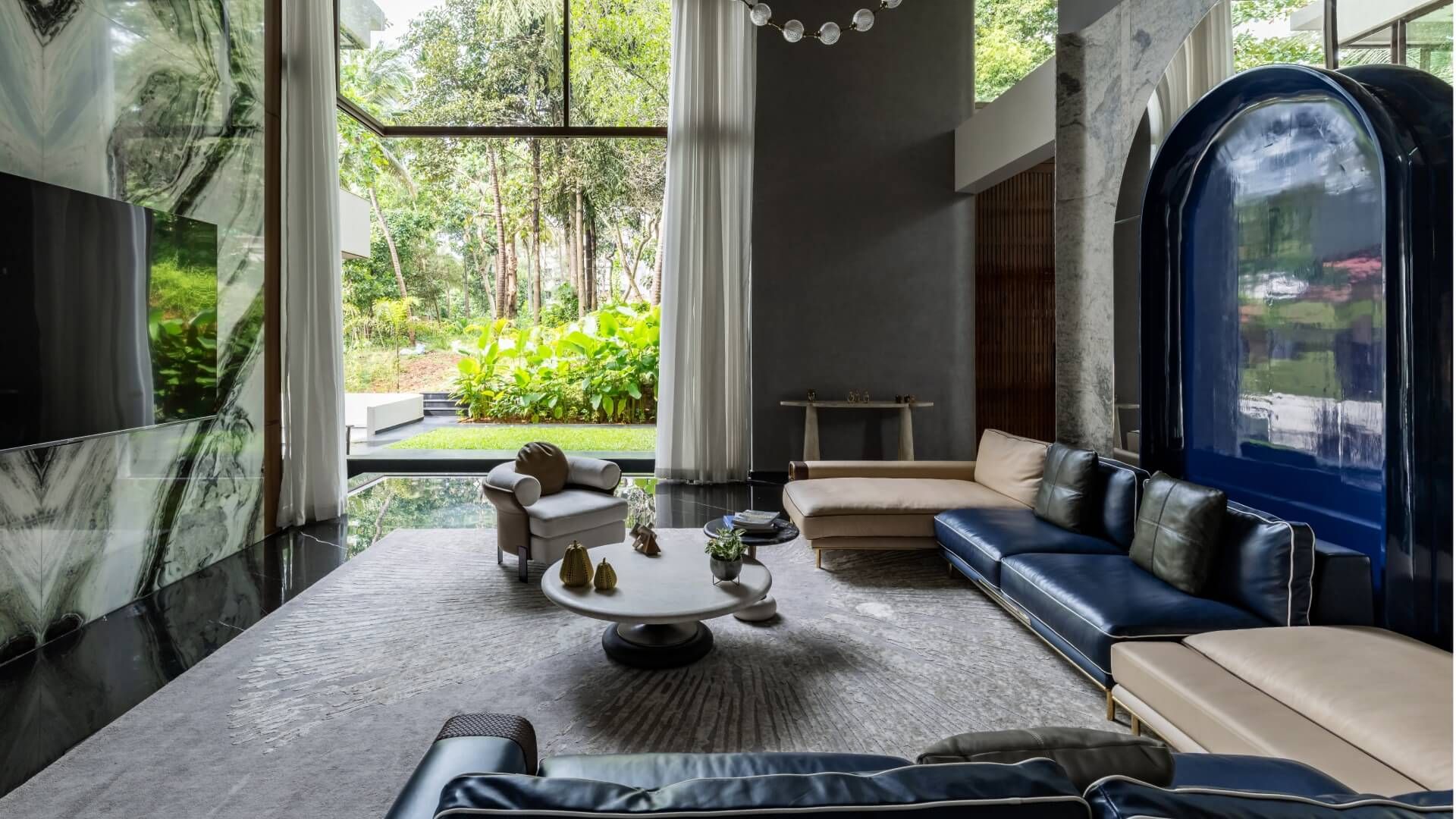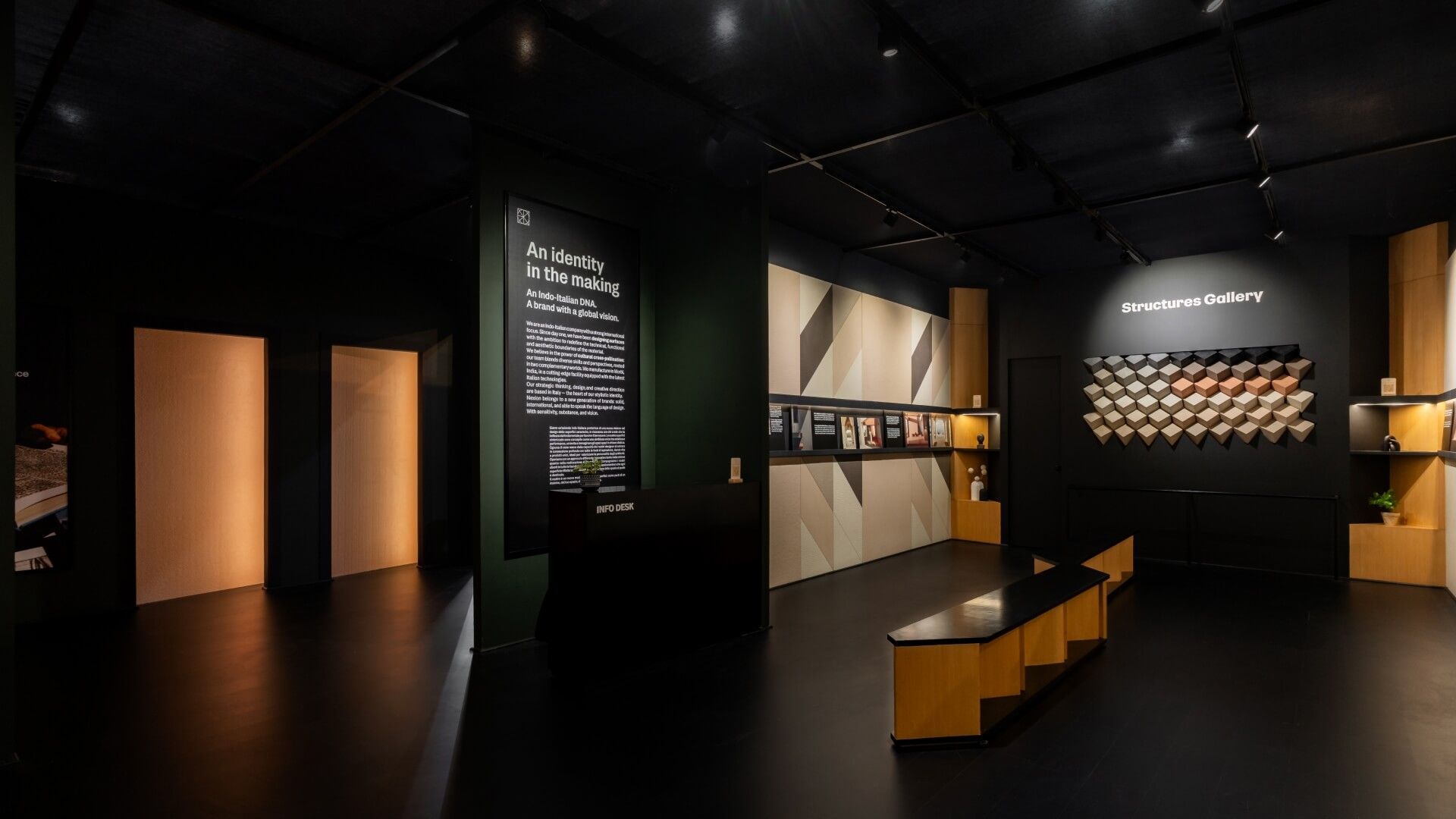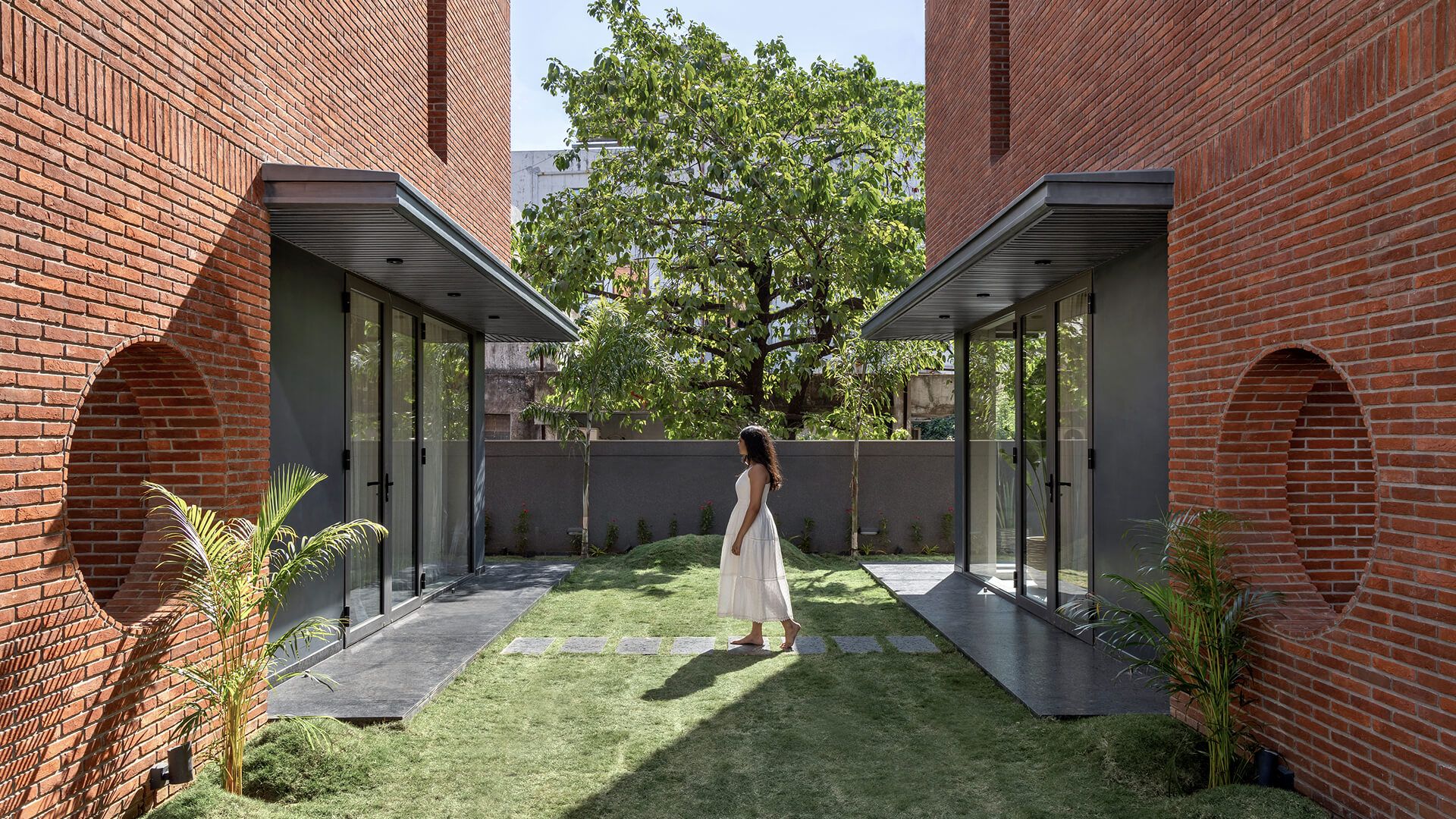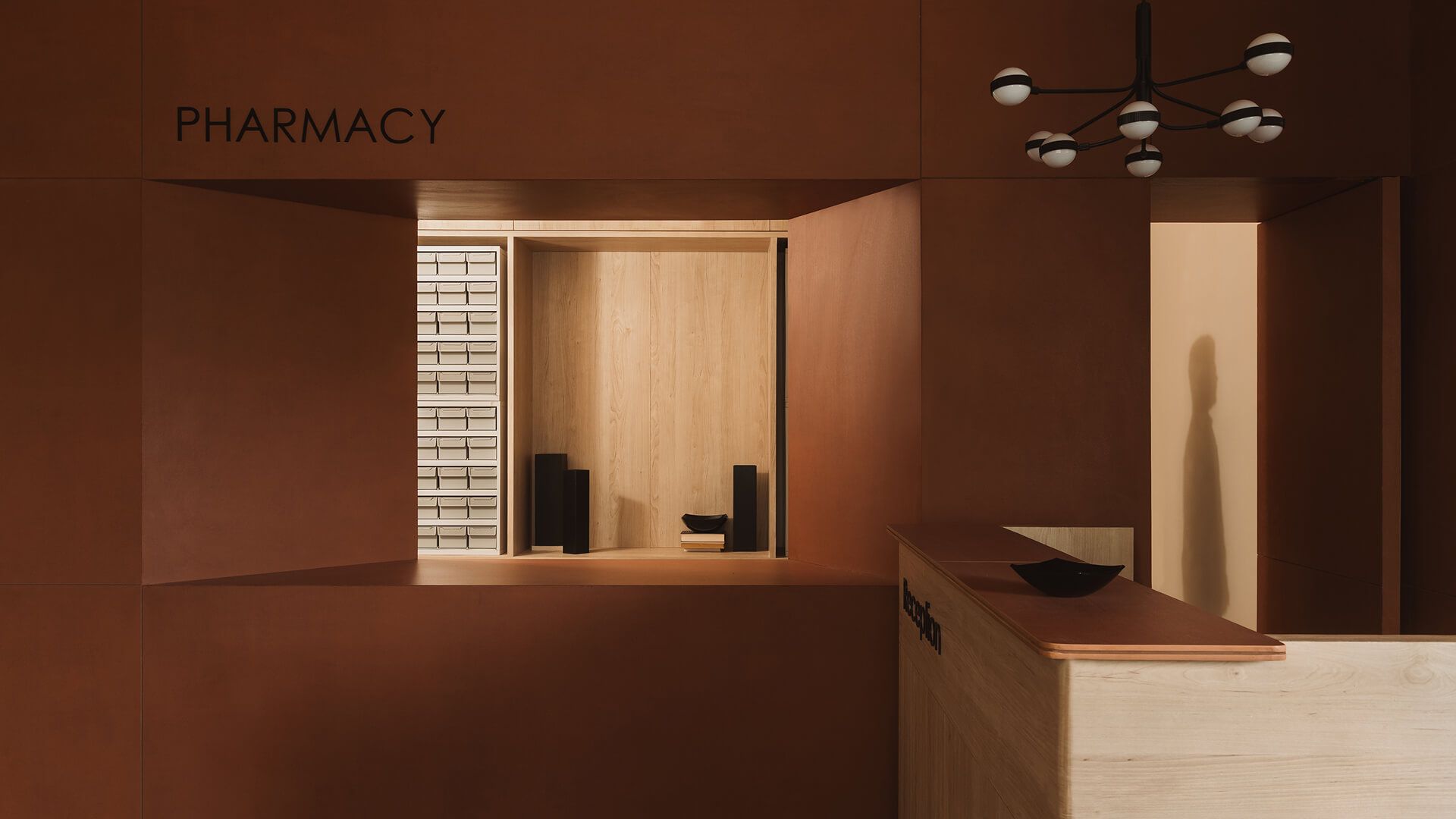As residential and commercial spaces continue to evolve, one design philosophy is emerging as both luxurious and deeply meaningful, that feels more essential than ever: biophilic design.
Stemmed from the innate human drive towards nature, biophilic design is more than just a fleeting trend, it’s a movement that reshapes how we live, work, and feel within our spaces. For those seeking to elevate interiors with purpose, elegance and wellness at the core, biophilic design offers an inspiring path to explore.


What is biophilic design
The biophilic design approach consists in integrating the natural elements into the built environment to create spaces that foster well-being, tranquility and natural creativity. It often entails the presence of organic textures, flowing forms, natural light, indoor greenery, and tactile high-performing surfaces that echo the organic beauty of natural materials but with a more environmentally conscious take.
It’s about more than just aesthetics: studies have in fact shown that biophilic spaces can reduce stress, enhance mood, and improve overall well-being.
Why biophilic design is thriving in 2025
Today more than ever, people crave environments that offer balance, grounding, and serenity. When spending time indoors, we tend to seek out materials and designs that reconnect us with nature, even from the very center of a bustling city. In 2025, biophilic design is evolving with:
- Sustainable refined elegance: a shift toward long-lasting, eco-conscious materials that mimic nature without depleting it
- Multi-sensory experiences: spaces designed to engage not just the sight, but the full spectrum of human senses, involving touch, and even sound.
- Seamless transitions: indoor/outdoor continuity using surface materials that can unify patios, kitchens, spas, and living spaces organically.
- A conscious approach to well-being: biophilic philosophy is also rooted in an ecological dimension, bringing the contemporary concepts of well-being and wellness to a higher level, as part of a holistic eco-conscious way of living.

How sintered surfaces fit into the biophilic design approach

Design firm: LIJO.RENY.architects, Photographer: Praveen Mohandas.
Nature is the muse, but durability, performance and sustainability are non-negotiable. That’s where Nexion’s sintered surfaces make their statement.
Inspired by natural stone around the world, and enhanced through innovative R&D process and manufacturing technology, our surfaces offer a tactile, organic look while delivering superior resistance to wear, heat, UV exposure, and bacteria.
Whether it’s a waterfall kitchen island in a stone-inspired matte finish, a spa retreat clad in earthy, textured panels, or a seamless flooring that flows from garden to interior, Nexion sintered surfaces will complement the biophilic aesthetic beautifully, both in the aesthetic and the approach.

How to integrate biophilic features into your project
Looking to infuse biophilic design into your next project? Here are a few ideas:
- Earth tones with depth: incorporating rich clays, mossy greens, and sand tones bring subtle warmth and grounding.
- Textured surfaces: matte and textural finishes evoke the tactile feel of natural elements and materials, perfect for feature walls and countertops.
- Room for natural light: high floor-to-ceiling windows and green areas that connect indoor and outdoor spaces are a great way to let the light filter naturally into the interior spaces.
- Indoor vertical gardens: create contrast with stone-look panelings as a striking backdrop for a thoughtful selection of greenery and living walls.
Biophilic design is a return to nature, a shift towards authentic beauty, resilience, and environmental responsibility.
The demand for interiors that feel grounded, graceful, and connected is a global sign of a deeper need for spaces that make us feel connected with our surroundings. Let nature in, and keep contemporary living constantly evolving.
Discover all the Nexion surfaces to incorporate into your next biophilic inspired project.

Biophilic design FAQ
Q: What makes a space “biophilic”?
A: Biophilic spaces feature elements that reflect or connect with nature. This can include natural light, an earthy color palette, lush greenery, flowing water features, and organic or organic looking materials and surfaces that mimic natural textures like stone and wood
Q: How can we introduce biophilic design into a modern space?
A: Biophilic design pairs very well with many modern aesthetics. For example sleek surfaces in stone or wood-inspired finishes, a curated greenery selection, and neutral palettes. Our sintered surfaces offer the perfect balance combining contemporary elegance with nature-inspired life-like design patterns.
Q: Can sintered surfaces be used outdoors as well?
A: Absolutely. One of the standout features of sintered surfaces is their resistance to UV rays, temperature shifts, moisture, and scratching—making them ideal for outdoor kitchens, terraces, facades, and pool surrounds. They’re perfect for creating seamless indoor-outdoor continuity, featured in many biophilic spaces.
Q: Is biophilic design just a trend, or is it here to stay?
A: While this approach is gaining momentum in 2025, biophilic design is deeply rooted in human psychology and backed by science. Biophilic principles are becoming foundational in residential and commercial design as more people prioritize wellness, sustainability, and a deeper connection to their surroundings.
Sources:
- 7 ways to enhance indoor environments with biophilic design
- 14 Patterns of Biophilic Design
- Natural beauty and human potential: Examining aesthetic, cognitive, and emotional states in natural, biophilic, and control environments
- Restorative Effects of Natural Environment Experiences – Terry Hartig, Marlis Mang, Gary W. Evans, 1991
- Tracking restoration in natural and urban field settings – ScienceDirect



